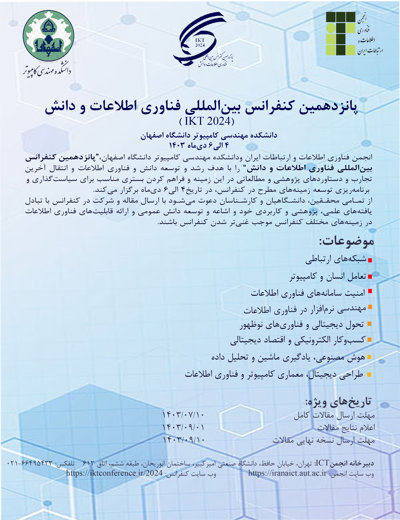0% Complete

نویسندگان :
کلمات کلیدی :
چکیده :
لیست مقالات بایگانی شده
Ali Bidaran - Dr Saeed Sharifian
Rushil Patel - Sana Narmawala - Nikunjkumar Mahida - Rajesh Gupta - Sudeep Tanwar - Hossein Shahinzadeh
سیدرضا قادریان خیرآبادی سیدرضا قادریان خیرآبادی -
Aien Ghanbari Adivi - Behrouz Shahgholi Ghahfarokhi
Mahmood Kalantari - Mehdi Feghhi - Nasser Mozayani
Hanieh Kashfi - Fereidoon Shams Aliee
Maryam Karimi - Taghi Javdani Gandomani - Mahdi Mosleh
شکوفه نوروزی - دکتر زینب موحدی شکوفه نوروزی - زینب موحدی -
Soroush Elyasi - Arya Varasteh Nezhad - Fattaneh Taghiyareh
Negin Bagheri Renani - Elham Yaghoubi - Mina Mohammadirad




